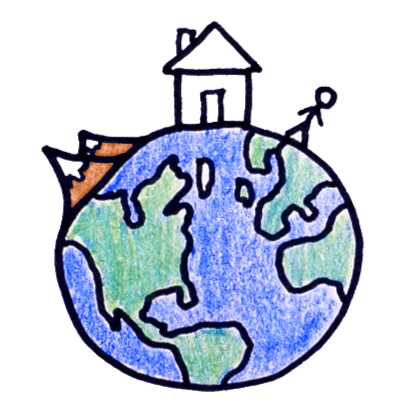2019-08-27
[public] 259K views, 10.5K likes, dislikes audio only
Thanks to the University of Minnesota for sponsoring this video! http://twin-cities.umn.edu/
The decisions we make while we browse the internet are suprisingly similar to the ones animals make as they forage for food...here's why.
Thanks also to our Patreon patrons https://www.patreon.com/MinuteEarth and our YouTube members.
___________________________________________
To learn more, start your googling with these keywords:
Optimality models: tools used to evaluate the costs and benefits of different organismal features, traits, and characteristics, including behavior, in the natural world.
Optimal foraging theory: a behavioral ecology model that helps predict how an animal behaves when searching for food.
Marginal value theorem: an optimality model that describes the strategy that maximizes gain per unit time in systems where resources, and thus rate of returns, decrease with time.
Central place foraging: a model for analyzing how an organism traveling from a home base to a distant foraging location can maximize foraging rates.
___________________________________________
Subscribe to MinuteEarth on YouTube: http://goo.gl/EpIDGd
Support us on Patreon: https://goo.gl/ZVgLQZ
And visit our website: https://www.minuteearth.com/
Say hello on Facebook: http://goo.gl/FpAvo6
And Twitter: http://goo.gl/Y1aWVC
And download our videos on itunes: https://goo.gl/sfwS6n
___________________________________________
Credits (and Twitter handles):
Script Writer, Narrator, & Video Director: Kate Yoshida (@KateYoshida)
Video Illustrator: Sarah Berman (@sarahjberman)
With Contributions From: Henry Reich, Alex Reich, Ever Salazar, Peter Reich, David Goldenberg, Julián Gómez, Arcadi Garcia Rius
Music by: Nathaniel Schroeder: http://www.soundcloud.com/drschroeder
___________________________________________
References:
Chi, EH, Pirolli, P, and Pitkow, J. (2000) The scent of a site: A system for analyzing and predicting information scent, usage, and usability of a web site. In: ACM CHI 2000 Conference on Human Factors in Computing Systems. http://citeseerx.ist.psu.edu/viewdoc/download?doi=10.1.1.42.7499&rep=rep1&type=pdf
Fu, W and Pirolli, P. (2007) SNIF-ACT: a cognitive model of user navigation on the world wide web. Human-Computer Interactions 22(4), 355-412. https://pdfs.semanticscholar.org/0d96/d03cf822ea1584b468389b3f4bc39164d85f.pdf
Hayden, BY (2018) Economic choice: The foraging perspective. Current Opinion in Behavioral Sciences 24: 1–6. https://experts.umn.edu/en/publications/economic-choice-the-foraging-perspective
Hayden, BY, Pearson, JM, and Platt, ML. (2011) Neuronal basis of sequential foraging decisions in a patchy environment. Nature Neuroscience 14: 933-939 https://www.nature.com/articles/nn.2856
Hall-McMaster, S and Luyckx F. (2019) Revisiting foraging approaches in neuroscience. Cognitive, Affective & Behavioral Neuroscience 19 (2): 225-230. https://link.springer.com/article/10.3758/s13415-018-00682-z
Pyke, G and Stephens, DW. (2019) Optimal foraging theory: application and inspiration in human endeavors outside biology. In JC Choe (ed.), Encyclopedia of animal behavior . 2nd edn, vol. 2, Elsevier Academic Press, Amsterdam, pp. 217-222. https://researchers.mq.edu.au/en/publications/optimal-foraging-theory-application-and-inspiration-in-human-ende
Van Koppen, PJ and Jansen, RWJ. (1998) The road to robbery: Travel patterns in commercial robberies . British Journal of Criminology 38: 230-246. https://www.researchgate.net/profile/Peter_Koppen/publication/270802169_The_road_to_the_robbery_Travel_patterns_in_commercial_robberies/links/569e080008ae950bd7a81fc2/The-road-to-the-robbery-Travel-patterns-in-commercial-robberies.pdf
https://www.patreon.com/minuteearth
/youtube/channel/UCeiYXex_fwgYDonaTcSIk6w
https://patreon.com/minuteearth
/youtube/video/4DF94Wvtekk

